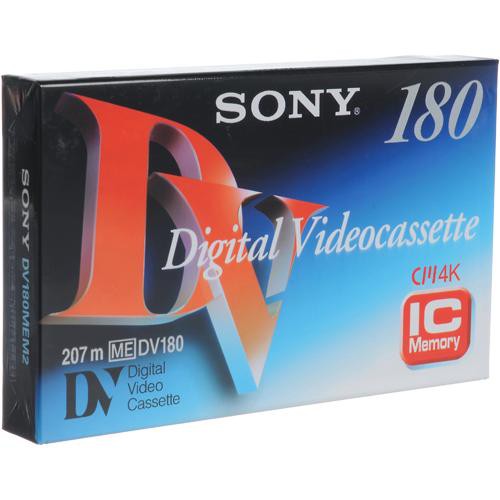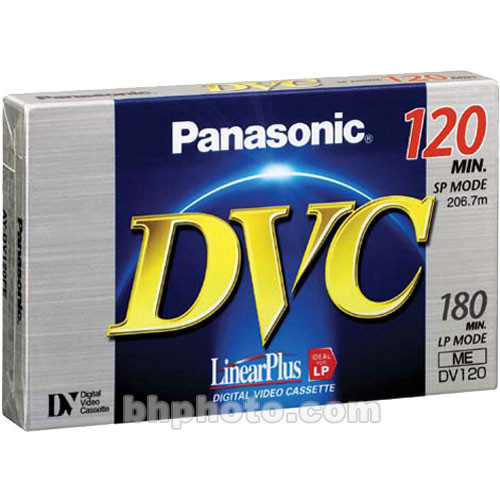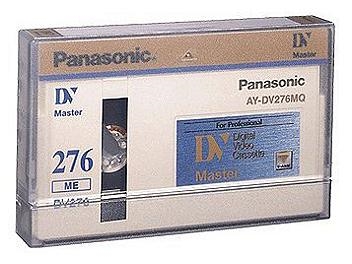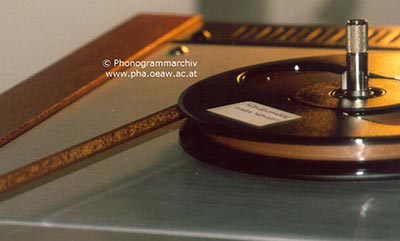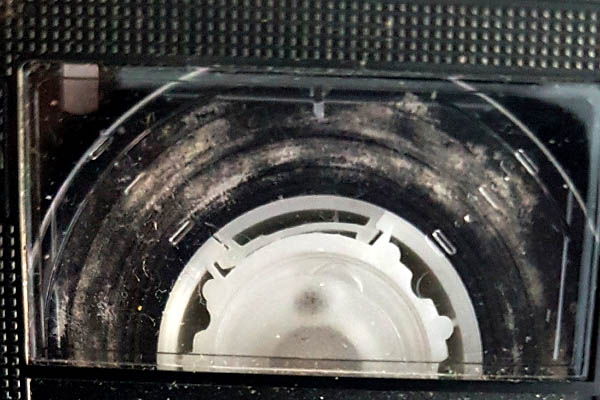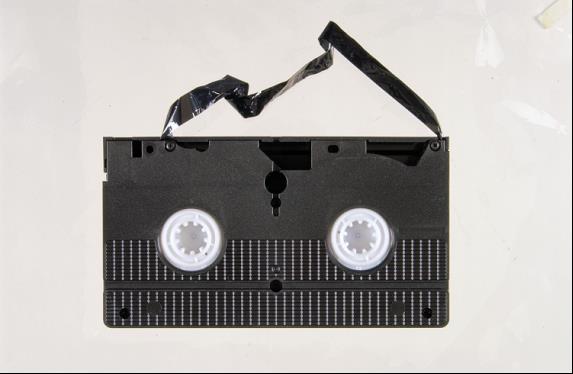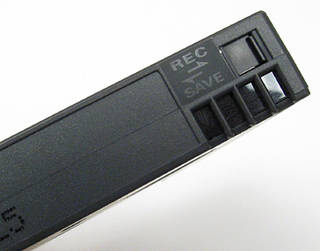| Table of Contents |
|---|
Introduction
Standard DVC (Digital Video Cassette) is a
| Table of Contents |
|---|
Introduction
...
Standard DVC (Digital Video Cassette) is a digital video cassette format that utilizes the DV encoding standard. According to the DV encoding standard, video must be recorded using 6.35 mm (1/4 inch) magnetic videotape. However, any size cassette can be used to house DV tape. Originally, DV cassettes were available in two sizes: Standard DVC and MiniDV. Most DV camcorders available on the consumer market were compatible with either Standard DVC or MiniDV cassettes. Some professional equipment, such as the JVC Professional DV camcorder, could accommodate both cassette sizes. DVC cassettes are larger and can record more video than MiniDV cassettes (3.5 - 4 hours of compared to 60 minutes), however MiniDV cassettes quickly became more popular among consumers due to their small size and portability.
Identification
...
| Info | ||
|---|---|---|
| ||
https://www.bhphotovideo.com/c/product/647486-DEMO/Sony _DV180MEM2_ DV_-180MEM2 _ 180 _ Minute _ Full .html & https://www.bhphotovideo.com/c/product/171695-REG/Panasonic_AY_DV120EJ_AY_DV120EJ_120_Minutes_Full.htmlSize DVC Standard Cassette with Memory Chip. B&H Foto & Electronics Corp. Accessed February 24, 2021. |
| Info | ||
|---|---|---|
| ||
Panasonic AY-DV120EJ 120 Minutes Full Size DV Video Cassette. B&H Foto & Electronics Corp. Accessed February 24, 2021. |
| Info | ||
|---|---|---|
| ||
Panasonic AY-DV276MQ DV Cassette. Malelo. 2021 |
Physical Characteristics
...
| Tape width | ¼ inch (6.35mm) |
|---|---|
| Tape composition | Metal evaporate (ME) |
| Cassette dimensions | 97.5 × 64.5 × 14.6 mm |
| Identifying features | Cassettes labeled with DV or DVC |
| Common manufacturers/brands | Sony, Panasonic, JVC |
| Playback |
|
Technical Characteristics
...
| Record time | Standard play: 3 hrs Long play: 4.6 hrs |
|---|---|
| Track pitch | Standard play: 10 microns Long play: 6.7 microns |
| Track width | Standard play: 10 microns Long play: 6.7 microns |
| Record/playback speed | Standard play mode: 18.81 mm/sec |
| Bitrate | 25 Mbit/s |
| Bit depth | 8 bit |
| Colour sampling | PAL: 4:2:0 NTSC: 4:1:1 |
| Resolution | PAL: 720x576 |
| Compression | 5:1 DVC-format DCT compression (intra-frame) |
...
Types of damage and deterioration
...
Binder deterioration
| Info | ||
|---|---|---|
| ||
"1.1.3. Inspect for damage / Look for chemical deterioration / Binder degradation". In Audio Tape Digitisation Workflow. Accessed February 22, 2021. |
...
Flaking/missing magnetic oxide particles are an indication of tape deterioration. This type of drop-out cannot be corrected physically.
Mould
...
| Info | ||
|---|---|---|
| ||
Are Your Video Tapes Showing Bad Signs of Mould. MultiMedia Select. Accessed February 24, 2021. |
Description
Active mould is generally moist while dormant mould is dry and dusty. Mould growths may be white, black, brown or mustard-coloured and usually have a pattered, fuzzy, or thread-like appearance. Mould can cause permanent damage to tapes over time if not removed. Fungus and mould is also a significant health hazard and affected materials should be handled using gloves and masks.
...
Mouldy tapes should be isolated from unaffected materials to prevent cross contamination. Store tapes at a temperature of 24°C in an environment with effective air circulation and less than 50% Relative Humidity. Loose mold can be vacuumed from the tape pack and then the tape should be treated with an appropriate fungicide.
...
an appropriate fungicide.
Stretching and breaking
| Info | ||
|---|---|---|
| ||
Figure 20. Wrinkled VHS tape. Caring for audio, video and data recording media. Government of Canada, Canadian Conservation Institute. June 30, 2020. |
Cause
Stretching and breaking of video tape usually results from improper handling or use of playback equipment.
...
Stretching can distort the tape signal however data can usually be recovered (with a decrease in signal quality).
Accidental recording
| Info | ||
|---|---|---|
| ||
Record Protection Mechanisms: MiniDV. Preservation Self Assessment Program. Accessed February 24, 2021. |
Description
Camera operators can accidentally record over pre-existing footage
...
- Section 9.0 - Outsourced digitization of audiovisual items
- Appendix C - Technical specifications for moving images
University Archives Procedure Manual
...
Visit the /wiki/spaces/ALC/overview for further reading on /wiki/spaces/ALC/pages/1891631115.
References
...
AMIA. "Video Preservation Factsheets." Accessed December 10, 2020.
Bensinger, Charles. "Chapter 6: All about videotape." In The Video Guide, Second Edition, 71-75. Santa Barbara, California: Video-Info Publications, 1981.
Bogart, John Van. "What Can Go Wrong With Magnetic Media?" In Magnetic Tape Storage and Handling: A Guide for Libraries and Archives. Washington, DC: The Commission on Preservation and Access, 1995.
Casey, Mike. "FACET: Format characteristics and preservation problems." Bloomington, IN: Indiana University, 2007.
Gibson, Gerald. D. "Magnetic tape deterioration: recognition, recovery and prevention." Paper presented at the IASA Conference, Perugia, August 26, 1996.
Jones, Gerald Everett and Pete Shaner. "DV Technology and the Camcorder." In Real World Digital Video. Second Edition. Peachpit Press, 2005.
JVC Victor Company of Japan Limited. "Professional DV." Accessed February 2, 2021.
MediaCollege.com. "DV video." Accessed February 2, 2021.
Nielsen, Rebecca. "Media Recognition: DV Part 2." Bodleian Libraries. March 26, 2012.
Wheeler, Jim. "Videotape preservation handbook." 2002.
Wilt, Adam J. "The DV, DVCAM & DVCPRO Formats: The DV formats tabulated." August 28, 2005.
Wilt, Adam J. "The DV, DVCAM & DVCPRO Formats." July 16, 2006.
Version history
...
| Version | Date | Author(s) | Version Notes |
|---|---|---|---|
...
